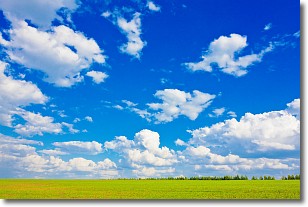Weather Alert in Colorado
Fire Weather Watch issued August 13 at 3:10AM MDT until August 15 at 10:00PM MDT by NWS Grand Junction CO
AREAS AFFECTED: Little Snake; White River; Lower Colorado River; Southwest Colorado Lower Forecast Area; Paradox Valley; Northern San Juan; North Fork; Gunnison Basin; Southwest Colorado Upper West Forecast Area; Southwest Colorado Upper East Forecast Area; Eastern Ashley National Forest; Eastern Uintah Basin; Book Cliffs; Colorado River Basin; Southeast Utah
DESCRIPTION: * AFFECTED AREA...In Colorado, Fire Weather Zone 200 Little Snake Forecast Area, Fire Weather Zone 202 White River Forecast Area, Fire Weather Zone 203 Lower Colorado River, Fire Weather Zone 207 Southwest Colorado Lower Forecast Area, Fire Weather Zone 290 Paradox Valley Forecast Area, Fire Weather Zone 291 Northern San Juan Forecast Area, Fire Weather Zone 292 North Fork Forecast Area, Fire Weather Zone 293 Gunnison Basin Forecast Area, Fire Weather Zone 294 Southwest Colorado Upper West Forecast Area and Fire Weather Zone 295 Southwest Colorado Upper East Forecast Area. In Utah, Fire Weather Zone 485 Eastern Ashley National Forest, Fire Weather Zone 486 Eastern Uinta Basin, Fire Weather Zone 487 Book Cliffs, Fire Weather Zone 490 Colorado River Basin and Fire Weather Zone 491 Southeast Utah. * TIMING...For the first Fire Weather Watch, from Thursday morning through Thursday evening. For the second Fire Weather Watch, from Friday morning through Friday evening. * IMPACTS...Any fire that develops will catch and spread quickly. Outdoor burning is not recommended. * THUNDERSTORMS...Scattered dry thunderstorms on Thursday and Friday will be capable of producing frequent lightning and gusty outflow winds which when combined with extremely dry conditions, will be capable of fire starts.
INSTRUCTION: A Fire Weather Watch means that critical fire weather conditions are forecast to occur. Listen for later forecasts and possible Red Flag Warnings.
Want more detail? Get the Complete 7 Day and Night Detailed Forecast!
Current U.S. National Radar--Current
The Current National Weather Radar is shown below with a UTC Time (subtract 5 hours from UTC to get Eastern Time).

National Weather Forecast--Current
The Current National Weather Forecast and National Weather Map are shown below.

National Weather Forecast for Tomorrow
Tomorrow National Weather Forecast and Tomorrow National Weather Map are show below.

North America Water Vapor (Moisture)
This map shows recent moisture content over North America. Bright and colored areas show high moisture (ie, clouds); brown indicates very little moisture present; black indicates no moisture.

Weather Topic: What are Contrails?
Home - Education - Cloud Types - Contrails
 Next Topic: Cumulonimbus Clouds
Next Topic: Cumulonimbus Clouds
A contrail is an artificial cloud, created by the passing of an
aircraft.
Contrails form because water vapor in the exhaust of aircraft engines is suspended
in the air under certain temperatures and humidity conditions. These contrails
are called exhaust contrails.
Another type of contrail can form due to a temporary reduction in air pressure
moving over the plane's surface, causing condensation.
These are called aerodynamic contrails.
When you can see your breath on a cold day, it is also because of condensation.
The reason contrails last longer than the condensation from your breath is
because the water in contrails freezes into ice particles.
Next Topic: Cumulonimbus Clouds
Weather Topic: What are Cumulus Clouds?
Home - Education - Cloud Types - Cumulus Clouds
 Next Topic: Drizzle
Next Topic: Drizzle
Cumulus clouds are fluffy and textured with rounded tops, and
may have flat bottoms. The border of a cumulus cloud
is clearly defined, and can have the appearance of cotton or cauliflower.
Cumulus clouds form at low altitudes (rarely above 2 km) but can grow very tall,
becoming cumulus congestus and possibly the even taller cumulonimbus clouds.
When cumulus clouds become taller, they have a greater chance of producing precipitation.
Next Topic: Drizzle
Current conditions powered by WeatherAPI.com




